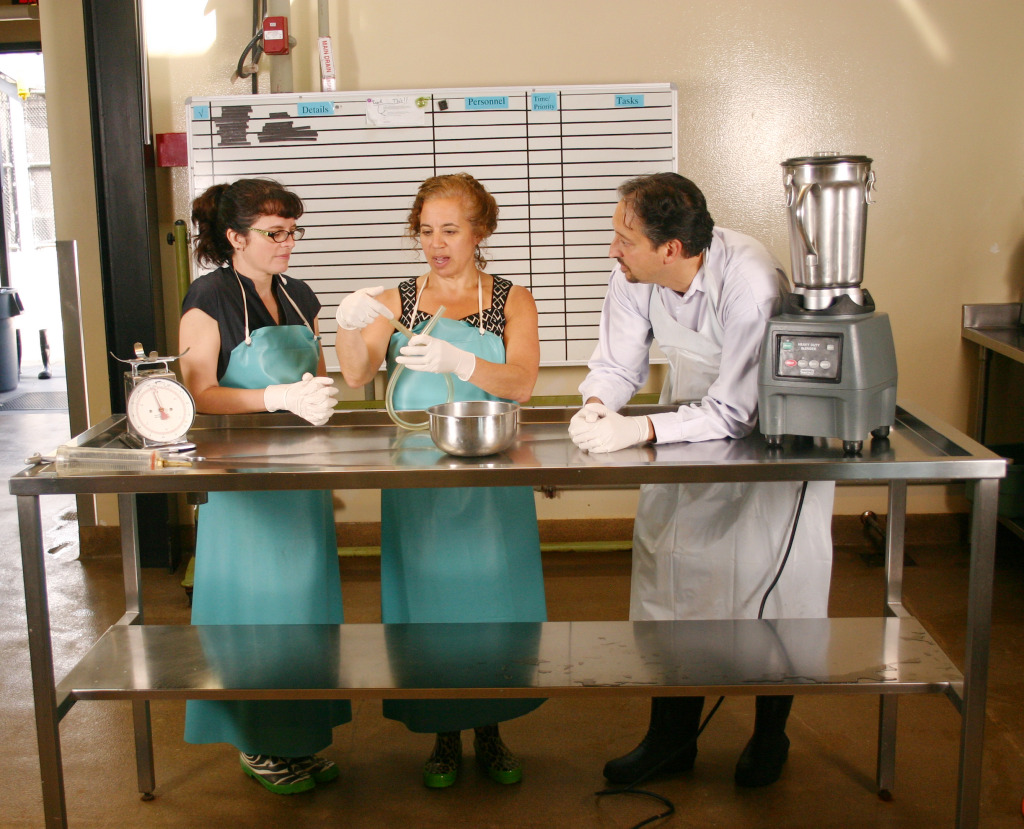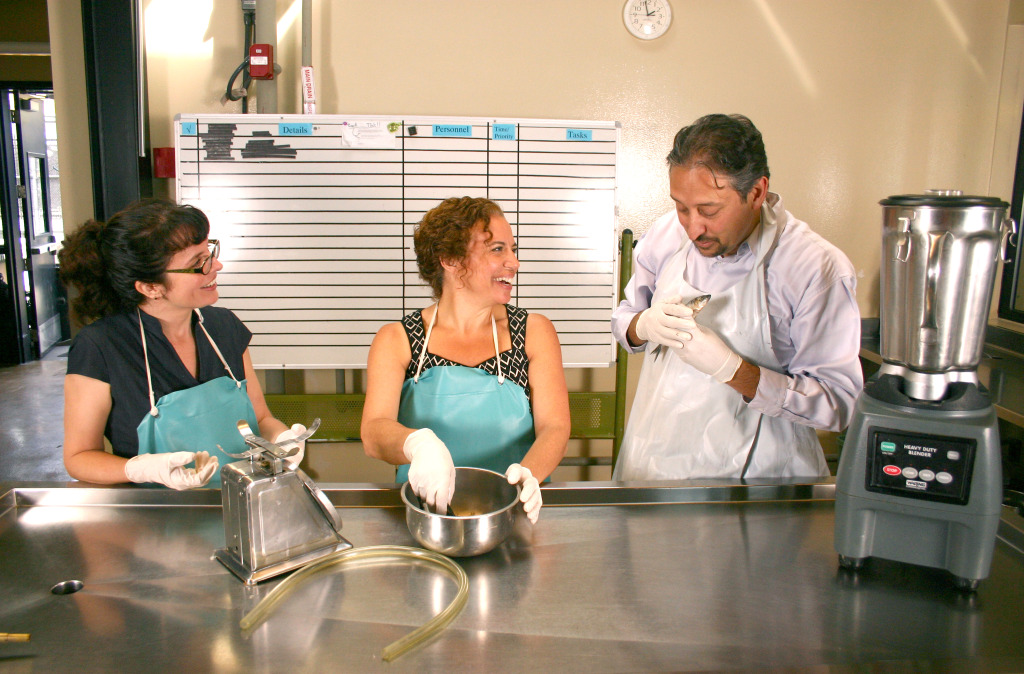Marci Davis, Chief Financial Officer, The Marine Mammal Center

Marci demonstrates marine mammal feeding techniques at the fish kitchen of The Marine Mammal Center. The blender shown here is for a fish milkshake that is then fed to baby animals recovering from malnourishment. It is not for margaritas.
The cost of donor acquisition is a hurdle for every fundraising organization, so getting a second gift from that same donor is a huge savings. Marci Davis, CFO of The Marine Mammal Center, asked us to help her find out what was actually happening between first and second gifts in order to spend the organization’s scarce marketing resources better. How could she gain as many second-time donors and spend the same or less money?
Combining data from The Marine Mammal Center’s Raiser’s Edge and Luminate (Convio) databases, our team analyzed what happens between the first and second gift and what factors impacted that gift, including delays between gifts, channel crossing gifts, distance from the center and the impact of live events, emails clicks, and other non-financial asks.
“Their analysis taught us things about donor behaviors that we never knew before. These insights gave us confidence to reallocate our marketing dollars without sacrificing overall revenue.”

